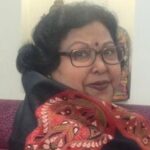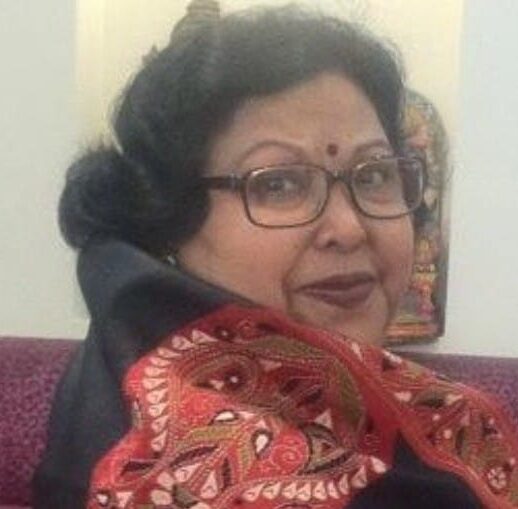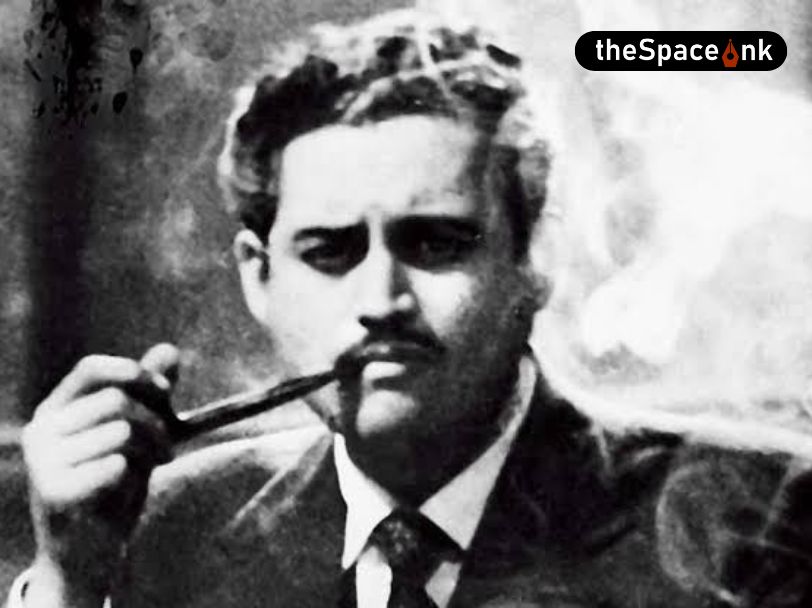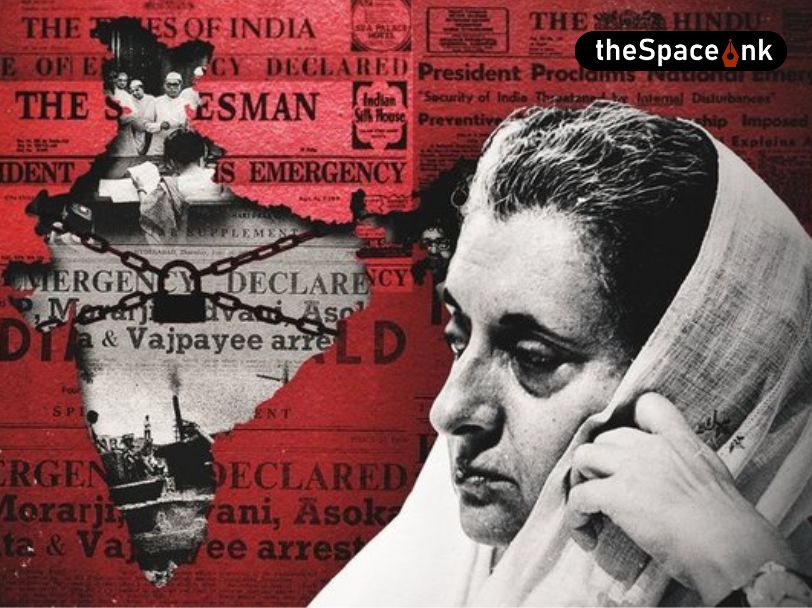I got the first culture shock of my life when I got to see and experience the first ever Durga Puja in Kolkata way back in 1967.
The girls at school, my cousins, and friends were all excited about going out for pujo shopping, duly I too accompanied my aunts and uncles to do the same. We were taken to the New Market and Shyambazar five point crossing; I was awestruck to see so many fashionable dresses displayed in the glass windows. Packets in hand we would go to either Rally Singh or Aminia restaurant for a post-shopping treat and go back home feeling happy.
The next day my aunts got busy taking measurements of us, cutting and stitching skirts, tops two pairs each! The climax was gradually building up when pandals started coming up, decorations and illumination with fascinating designs magically transformed our locality and in no time the Pujas were here. The hype, the dazzle, girls and boys parading like fashion models! Every single thing was so new to me. Whoa! It was overwhelming to say the least. The pomp, show, food stalls and fairs, was all too much; somehow I felt numbed. It seemed the entire city of Calcutta had gone mad. From morning till late night people were buying and buying, shopping for clothes, shoes, gold, spending millions of money. At the market places, later on the shopping malls, crowds are on a spending spree– buy, eat, repeat. Beyond that nothing mattered. What I witnessed in Kolkata in 1967, is still the same even after nearly 50 years. Everything everywhere is so cosmetic, synthetic. There is no life in the celebration. Yet the entire city has gone insane. Amidst all this I felt left out and alienated. Miserable. This feeling still persists today. I realised this is not my Durga Puja. The pujo I grew up with. The celebration here is like a cinema show. To be watched from afar.
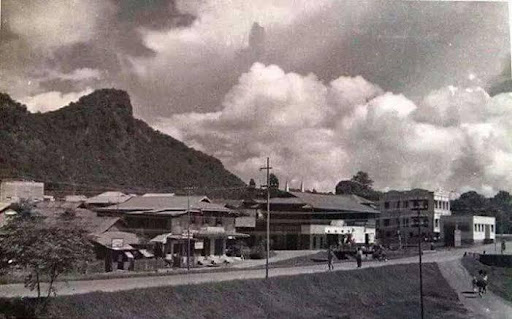
Let’s go back to Myanmar in the early sixties and fifties. My intention here is not to theorise about how Bengalis settled abroad and eventually organised Durga puja. There are pundits who do that in volumes. I am here to give you a very personal peek into the puja I had known all my life.
For us, pujo invariably started in September. The rain weakened, the wet sunshine with wisps of azure clouds floating by; the elders at home started discussing about the puja committee to be set up, the programme on those three days to be looked into, lists of invitees to be drawn. Meetings and eating went on and on. Our house was always the hub of puja planning– my grandmother, mother, aunts and cousins all clamoured with their opinions, as if the puja was our personal priority. But it is actually a community festival celebrated by all the Hindus, Punjabis, Marwaris, Sindhis, Nepalese, Burmese and Muslims.
Our house was a haven of shelter to those who would come to Taunggyi as guests during pujas. Rehearsals for cultural programs took place every day in our house. We desperately waited for the school to close down for a couple of days. The other day I asked my cousins about their early memories of the Durga puja in Taunggyi; one of them said “it was the time when I saw my uncles and dad in funny costumes acting in funny plays!” Another cousin says “I remember the Durga murty (idol in Bengali) being made and how I kept track of the progress every day; We would marvel at the features of the Goddess’s faces; if a Nepali artist was creating the idol, the features took the beauty of Nepali girls. If the artist was from Manipur then the goddess resembled Manipuri princesses.” My sister, Nita Datta says she misses wearing new dresses, clamouring for ‘narkoler phopra’ (coconut flower) as prasad, and at times rushing off to the nearby Chinese chow shop just before Anjali! One time during a play, she bumped into Paran uncle who was dressed in my aunt’s sari, sported a long fake pigtail and squatted before the backstage door smoking a cheroot! Paran uncle was actually playing the role of Sita. I can only imagine what four year old Nita must have felt looking at him.
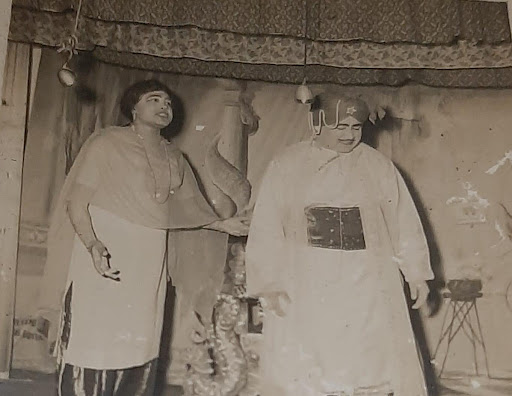
I cannot claim that my family started the Durga puja in Taunggyi but unofficially our house became the hub of all action. The feverish activity starts from Panchami when everyone joins in to get the finished Pratima (idol) to the mandap. Youngsters would get busy decorating the pandal with crepe ribbons, setting up the music sound system so that from Shashti itself the Mahishasur Mardini could be played for those who missed out the radio program. The next four days were spent in a frenzy. Shashti, Saptami, Ashtami, Nabami. Morning rituals of Anjali (special puja offering) and distribution of fruits and sweets, Arati (puja using lamps and incense) in the evenings followed by the much awaited skits and dramas by the menfolk. Saptami nights were for men and boys; plays like Ramayana, Bharatey chaiy, Sirajuddaulha were performed while the ladies in the audience booed at their husbands fretting about on stage, forgetting their lines; once during the staging of Mahabharata Arjuna’s arrow while targeting the fish eye misfired and with a plop fell on some lady’s lap where an unsuspecting baby was sleeping peacefully. At times our mothers and aunts would call out from the auditorium asking the actors to end their boring plays as it was getting late and cold! Amidst catcalls and whistles the first day’s major program ended. It was time to go home.
Mahashtami rituals followed by Sandhi puja and the sacrifice of ash gourd was a sight for us. We were curious to see the magenta blood dripping from the ash gourd that was stuffed with Malabar spinach seeds wrapped around the vegetable with mud. Ashtami evening was for us– ladies special. It’s our gala event. Dressed to kill in dazzling costumes the variety programme started after Arati, the auditorium would be overflowing with an equally enthusiastic crowd. The evening started with little girls’ dancing to songs like “ei Sundor Swarnali Sandhyay”, “Dhitang Dhitang bole”, “Mera nam Chin Chin Chu” and such. Rabindranath Tagore’s “Mor bina othey kon shure baji”, Atulprasad Sen’s “Otho go Bharat Lakhhi” followed. Once a little girl dressed in a white sari with a red border appeared through the trap door on stage to the song of “Otho go…”. There were endless spectacular events to last till two in the morning! Mr. Antosh, our Geography teacher who was a Catholic, played the guitar and crooned lovely Md Rafi songs. My brothers and their friends gave us Beatles numbers. The Burmese secondary teacher put up group Burmese dances. Phew! There was no dearth of talent. The Chinese girls and boys performed the lantern dance. Finally our bit was over for the night. Tired and happy we trudged back home.
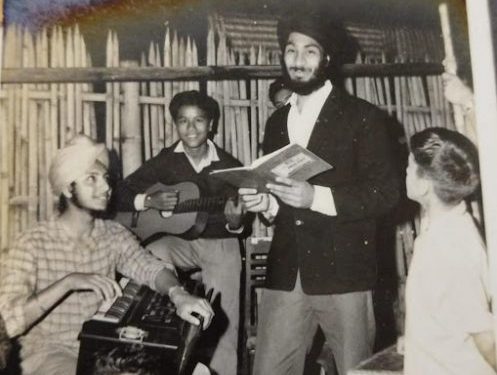
Navami rituals and Anjali over, we waited for the final entertainment– selection of the best items from the previous two evenings plus guest performances. The guest performers included Shaha Babu, who peddled plastic flowers and toys brought from the Bangladesh border. He sold these wares on foot from village to village, throughout the year but somehow managed to reach Taunggyi in time for pujas. Wearing a joker’s costume, holding a thin bamboo fishing rod he would dance and sing in a strange dialect, half Sylheti, half Chattagrami, (dialect from Chattagram in bangladesh) “Borgi feley maas naw phayee, maas er moton phyoddyo jinish ar kisu to nai”; much to the delight of the children he went about prancing on the stage. There was a genuine sense of belonging and bonding among everyone who was part of the puja. When in Taunggyi nobody in the family would dream of visiting other cities for holidays during the pujo season.
The fifth day, Dashami, was a sad day for all, accompanied by our mothers, aunts and female relatives we would go to perform Boron (bidding farewell to the goddess with sweets and vermillion), to Ma Durga. Bid her adieu with sweets, alta, sindoor, paan. Gloom descended upon us when the idol was taken in huge lorries to a nearby river for immersion. There were arrays of cars big and small; boys and men walking and cheering at the beat of drums; finally the idol would be lowered into the turbulent water of Tayaw Chaung. Teary eyed we returned to the now empty Mandap where just a lamp burned. The priest would sprinkle Shanti jal (sacred water). After a half hearted kola kuli (traditional Bengali hug) it’s back home again preparing for the long awaited celebrations of Bijoya Dashami the next day.
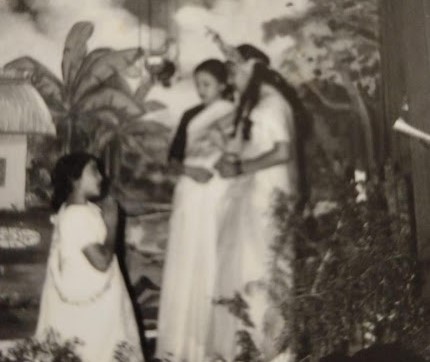
Breakfast done we would go to the puja Mandap. Most of the ladies armed with “Boti” (kitchen chopping blade) vegetable carving knives, trays would be busy cleaning and chopping bagfuls of vegetables, picking and cleaning rice, lentils, spices being ground…it was brimming with activities for the grand feast. Dad, uncles, and their friends were all busy with cooking. The aromas wafted everywhere, whetting our appetite ten folds. Time to get dressed and go to the Durga Bari for the gala Bijoya Sammelani. Dressed in our puja best, we greeted the elders by touching their feet, wishing Shubho Bijoya to friends and doing kolakuli (a special exchange of hugs).
Thereafter, it was time to sit down and eat. Plantain leaves glistening with water were laid out. Salt, green chilies, lemon wedges carefully placed in the corner, steaming rice would be served with ghee, alu bhaja, dal, begun bhaja, followed by panch mishali torkari. That over, the eagerly awaited show stopper mutton curry would be served, with a mixed green salad which we named ‘dil khush’ followed by a sweet chutney of tomato, dates, amsatta and finally mishti doi, sweets, Rosogolla and payes. The most admirable thing about this feast is that not a single piece of sweet is bought from any sweet meat shops! It is unthinkable. For the past two days all the ladies have been making them, a labour of love. That makes it so special and spectacular. The sweet pan prepared by the thakurmas and didimas (grandmas) being the last to savour. Amidst cheers of Aschhe bochor Abar hobe (we’ll celebrate again next year) one year of feverish excitement would be shelved for a few days rest until it’s time for Kali puja…another festival.
Our Taunggyi pujo had no glamour, there is hardly any carnival burlesque’s happening, no ferris wheel to take your breath away. Yet it had its own warmth, its own homely charm, with real people whom you can touch, feel, interact one to one. It was a pujo to be cherished and enjoyed by all.
Images courtesy: Chanda Dutt
Chanda Dutt is a home-cook and Burmese cuisine expert based in Kolkata. Her pop-ups are quite popular among the food lovers in the city. She briefly ran a Burmese cuisine restaurant called Chanda's Khawksuey.



